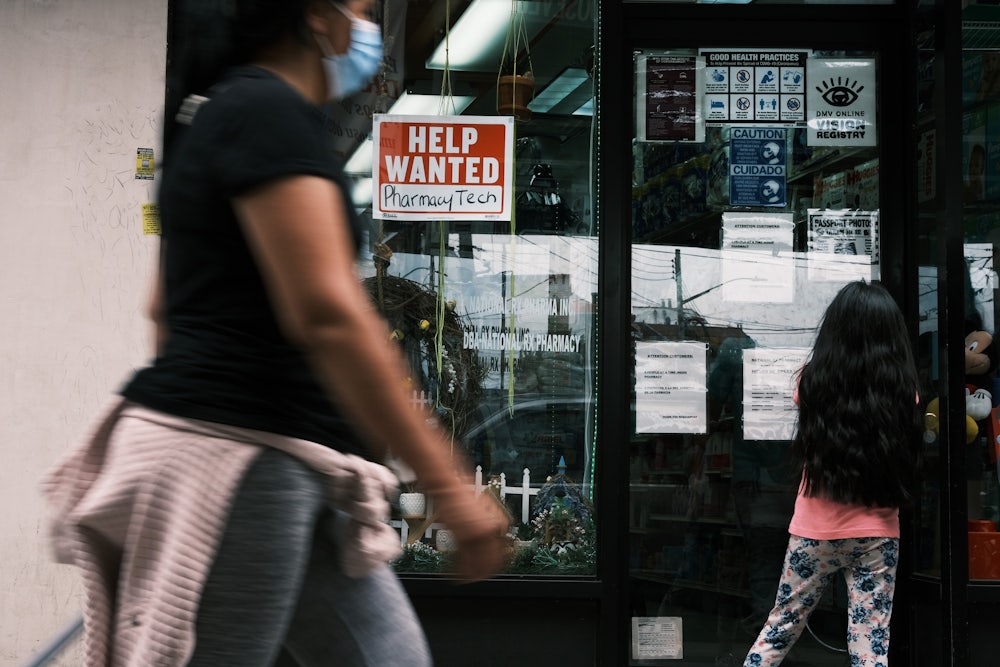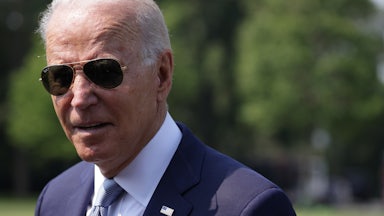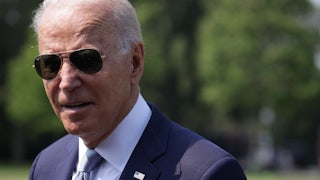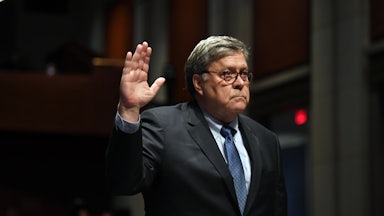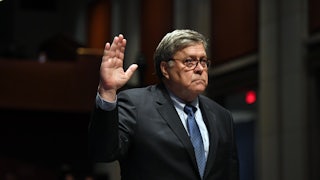News travels slowly in the summer months, so you may have missed this week’s signal that the Great American Labor Shortage of 2021 is easing: Fewer people are quitting their jobs.
Last month I expressed skepticism that the much-discussed labor shortage, still the subject of countless Page One feature stories, would last much beyond September 6, when the federal government discontinues its $300 weekly supplement to unemployment benefits. Now I think maybe I should have said the labor shortage wouldn’t last much past July 1.
Nearly half the states—all led by Republican governors—have ended the supplement early, in the belief that it was discouraging people from looking for work. Although responsible scholarship during most of the pandemic indicated that fatter unemployment checks weren’t shrinking the labor market significantly, the enormous recent growth in unfilled jobs suggests that started changing this spring. It’s difficult to identify many alternative explanations when nine million jobs go begging.
One alternative explanation I find plausible is that workers remain frightened to return to their workplaces. Many of my confrères in the professional classes, who by virtue of their sky-high vaccination rates should have little to fear, still won’t be back in their offices before Labor Day. Several rungs down the income distribution, where encountering the unvaxxed on the job is much likelier, the working class has more legitimate reason to fret about getting infected with Covid-19’s delta variant, which is now dominant in the United States.
Yet President Joe Biden, who presents himself as a champion of the working class, won’t let the Occupational Safety and Health Administration issue a vaccine-or-mask requirement for all workplaces, even as evidence mounts that the administration’s pretty-please approach is failing. Biden can’t even bring himself to order the military to require vaccinations. This is political cowardice, and many of Biden’s allies are starting to suggest as much. “I’m trying to restrain myself,” Kathleen Sebelius, who was health and human services secretary under President Barack Obama, told The New York Times this week. “We’re going to tiptoe around mandates,” she said. “It’s like, come on. I’m kind of over that. I want to make sure that people I deal with don’t have it so I don’t transmit it to my granddaughter.”
Would vaccine-or-mask mandates endanger the Democrats’ congressional majority in the 2022 midterms? Perhaps. The loudest protests would come, ironically, from that same working class most in need of protection, many of whose members refuse for idiotic reasons to get vaccinated. But unnecessary loss of life is the greater danger, and mortality should not be hostage to political risk. Even if you’re the sort of crazed partisan who finds such considerations sentimental, give me a break. The midterms are more than a year away.
The new signal that the labor shortage won’t last is that the “quits rate” dipped in May to 2.5 percent, according to Labor Department data released July 8. That’s still high; April’s 2.8 percent rate was the highest in 20 years. But it interrupts a steady rise during the previous three months, from 2.3 percent in January.
It’s always risky to extrapolate from a single data point, and the May quits rate may be an outlier. Also, I’d be remiss not to note that within the job category “accommodation and food services,” where job losses were concentrated during the pandemic, the quits rate in May was, at 5.7 percent, just as high as it was in April. Food and hotel workers were still telling their bosses in record numbers to take this job and shove it, signaling strong confidence that they could get a better job elsewhere.
But Elise Gould, senior economist at the left-leaning Economic Policy Institute, disputes that the labor market was all that tight to begin with. “We still have a huge jobs shortfall,” she told me via email, but “the data suggests that the hole is filling in rather steadily.” Subtract from new May hires all the firings and resignations that occurred that month, she noted, and that nets 609,000 jobs. That’s significantly higher than the 462,000 average for March, April, and May. And of course payroll employment has been rising for months. May’s quits rate of 2.5 percent, Gould said, isn’t much higher than it was before the pandemic tanked the economy; from October 2019 through February 2020 the quits rate was 2.3 percent.
The July unemployment numbers that we’ll see next month, and the July quits-rate data we’ll see in September, will give us a clearer picture of the reopened economy. I predict that all this moaning about choosy job seekers will peter out during the dog days of August, as it becomes clearer that the labor shortage is evaporating. If you still see feature stories next month about employers unable to hire workers, that’s only because August is when editors and reporters go on vacation and the papers are padded with prewritten news.
